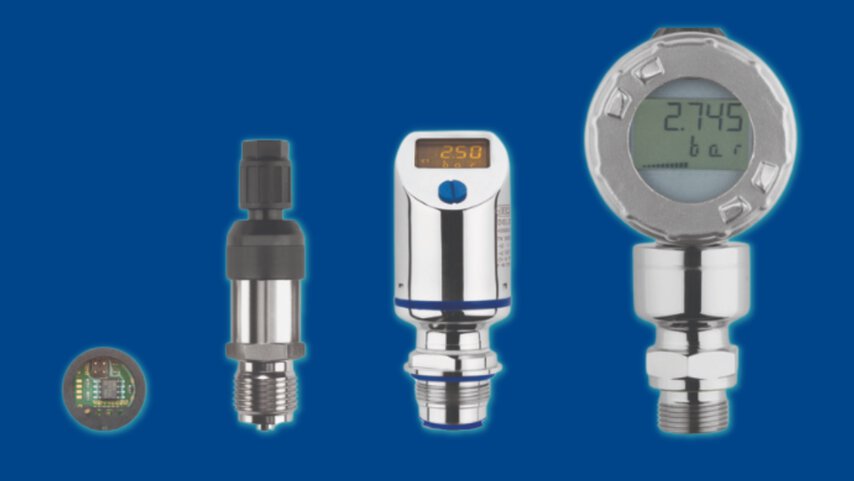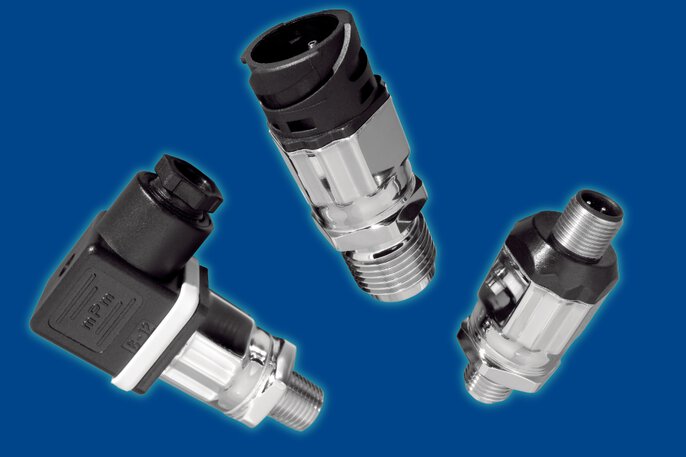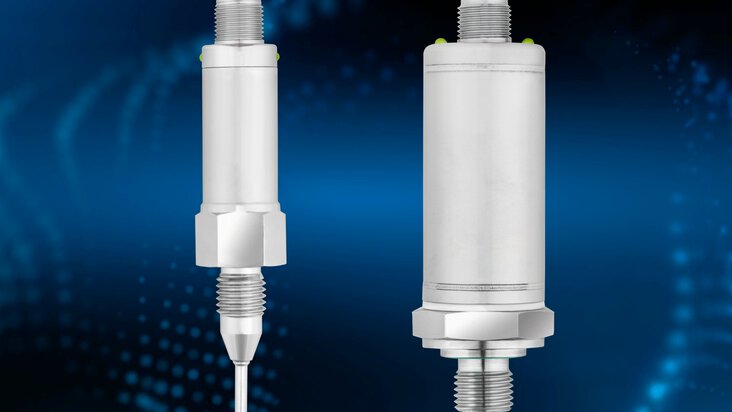

Understanding absolute pressure sensors – use and functionality
Absolute pressure sensors allow extremely precise measurements to be taken that are free from the influence of the environment, such as weather conditions or altitude. How do they work? In which areas of industry are they used? We answer these questions in the article below.
Absolute pressure transmitter – the future of pressure measurement?
Pressure transmitters, often referred to as pressure sensors, are designed to continuously measure the pressure of gases and liquids in industry. With the rapid development of technology, these devices have also evolved. Until recently, pressure transmitters based on capacitive and piezoresistive technologies were the most commonly used. Nowadays, so-called intelligent pressure transmitters based on microprocessors are becoming more and more popular. Amongst these, absolute pressure sensors can be mentioned.

Pressure transmitter for measuring relative and absolute pressure JUMO MIDAS S05
Absolute pressure - definition and measurement principle
Absolute pressure is obtained by measuring the target pressure against a known absolute vacuum pressure. This can be compared to measuring temperature in Kelvin, where the lowest possible temperature is 0°K.
With the vacuum as the reference point, all measurements will give a value greater than the absolute minimum specified by the vacuum. This is essential for accurate measurements, due to Boyle's law, which states that the pressure of a gas is inversely proportional to its volume at constant temperature. Therefore, anything other than a perfect vacuum will cause the absolute pressure sensor measurement value to vary with temperature.
However, achieving a perfect vacuum is not straightforward, especially if the price of the sensor is to be affordable. Consequently, pressure transmitters mostly have an approximate value of it, usually in the range of 35 microbars (0.0005 PSI).

Ciśnienie względne i bezwzględne opierają się na różnych zasadach pomiaru
Relative and absolute pressure – the differences
Most pressure sensors measure this value based on the deformation of the diaphragm. If it is exposed to process pressure on one side and vented on the other, the deformation decreases by the amount of ambient pressure. Relative pressure is therefore the difference between process pressure and atmospheric pressure.
Absolute pressure sensors have a different design - the side of the transducer that is not in contact with the medium is housed in a permanently sealed absolute vacuum chamber. Therefore, the deformation of the diaphragm is not affected by atmospheric pressure - it uses the vacuum as a reference point.
In summary, the main difference between relative and absolute pressure measurement lies in the zero point of the scale, i.e. the reference pressure value entered. Absolute pressure is measured against an absolute vacuum, while relative pressure is measured against the current ambient pressure.
Operation of absolute pressure sensors
A vacuum is created inside the absolute pressure sensors and they are then hermetically sealed. This ensures that the pressure measurement result is not affected by external factors such as the current weather or the altitude at which the device is located. This makes them ideal for applications including aviation and meteorology.

Absolute pressure sensor diagram
Absolute pressure transducers - types of industrial applications
Meteorology
Absolute pressure sensors are most commonly used to measure barometric pressure in altimeters - meters of height above sea level.
Automotive industry
The absolute pressure transducer (MAP sensor) is also used by vehicles with petrol and diesel engines, measuring the pressure in the engine intake manifold. The engine's electronic control unit (ECU) uses this information to determine the optimum combustion of the fuel-air mixture and ignition timing.
Food industry
In industrial applications, it is often necessary to create a partial vacuum. This is the case in food packaging, where the residual pressure (residual oxygen remaining in the packaging) determines the shelf life of the products. An absolute pressure sensor can ensure that the pressure in each package is the same.
Other industrial applications
Absolute pressure sensors are also used in, among other things:
-
scientific laboratories
-
aerospace industry
-
in the medical industry - packaging medical products in a sterile environment to prevent the entry of bacteria.
-
in the chemical industry
-
the refining, oil and gas industry
-
in the pharmaceutical industry

Vacuum packaging of food – one application of absolute pressure sensors
JUMO absolute pressure transmitters
We offer a variety of pressure transmitters dedicated to relative and absolute pressure measurement, including:
- ${title}${badge}

